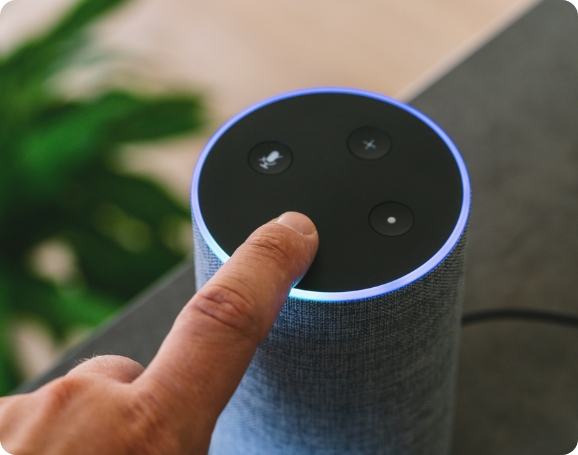
Why Intelligent Assistants Will Replace Chatbots
There is a lot of confusion in the world of tools for human-machine interaction and conversational systems today. Monikers like Bots, Chatbots, Virtual Assistants, Conversational Agents, and Intelligent Assistants are bandied about to suit the marketing messages and brand positioning sometimes.
Chatbots were mostly deployed to engage users on messaging apps and on websites through chat windows for customer support, lead generation, form filling, guided actions, and so on. And intelligent assistants like Google Assistant, Siri, or Amazon Alexa that we use as personal assistants originated with a different goal. However, the distinction between chatbots and intelligent assistants is becoming ambiguous as these terms are being used interchangeably. In fact, they are quite different from each other in the way they imagine a natural human interaction, their design principles, the technologies they use, and the way we experience them.
One key difference between chatbots and intelligent assistants
is that chatbots were designed for the ‘typing-user’ while intelligent assistants
focused on the ‘speaking-user’.
Advancements in AI and natural language understanding (NLU) technologies are critical factors behind the growing intelligence in intelligent assistants. They have made ‘voice’ the next wave of human-machine interaction after text, GUI, and touch. Voice is quickly gaining acceptance as the preferred mode of interaction for many smartphone users, especially with the millennial and post millennial generation. It is sure to gain more ground as natural conversation based tools such as intelligent assistants present us with easier, faster, frictionless, and more compelling experiences.
Since chatbots were primarily designed for the typing user, they were geared towards giving users a break from laborious typing. A longer conversation with many dialog turns was often preferred over requiring users to type a long sentence. For example, a banking chatbot would not ask an open question like ‘How can I help you today?’, but is likely to ask ‘Are you looking for help with a savings account, investment, loan, or a credit card?’
Chatbots are typically scripted decision trees with pre-determined rule-based paths. They are intent on moving the ‘conversation’ from one state to the next. They do not cede conversation control during the entire interaction. Given the nature of the technology, we are not allowed to ask questions outside the state/context.

In fact, in most cases, chatbots do
all the ‘asking’ and
we are expected to just respond to them.

Over a period of time, it can become unwieldy and awkward to support any interaction that requires a longer, deeper, and more complex decision tree. They were generally successful when the focus was on customer support with a finite scope or the goal was to cut costs of running a manual customer service center. In many cases, they were the only way for customers to reach a company and in such cases they did not have to compete for the user’s attention. Chatbots on messaging apps had some value as they allowed users to seek resolution for issues round the clock, without having to leave the native environment.
On the other hand, intelligent assistants like Siri, Alexa, and Google Assistant were primarily designed for the ‘speaking-user’ on smartphones and smart speakers like Amazon Echo and Google Home. Our conversation style is more natural when we speak vs. when we type. Hence, intelligent assistants were designed to understand our natural language interactions. They use advanced AI technologies to recognize, understand, and process voice and text based natural conversations with high accuracy. They are rapidly moving beyond executing specific commands and smart home automation tasks to attract and engage us in a free-form conversation that feels natural. Intelligent assistants work across devices. They are focused on providing a compelling, enjoyable, and engaging user experience. Users have no compulsion to use Intelligent Assistants and hence they have to be designed to wow the user. They are flexible to share conversation control with the users.
Since they rely on technologies like deep Q&A, they can handle a wide range of questions without requiring an unwieldy pre-configured decision tree. For example, Amazon Alexa and Google Assistant can answer a wide range of questions from the web in natural language. Above all, intelligent assistants can learn and get better with experience. They resolve complex questions swiftly and guide users to their goals with ease.
Chatbots have been proliferating over the last 6–7 years and have a large installed base. Given that intelligent assistants can perform a range of complex sets of tasks for users, can we upgrade existing chatbots to intelligent assistants?

It’s not going to be easy to repurpose chatbots to higher-order,
mixed initiative conversations because of fundamental architectural differences between them.
The truth is that though chatbots are getting more intelligent, many of them
still have a lot of hard-coded rules.

